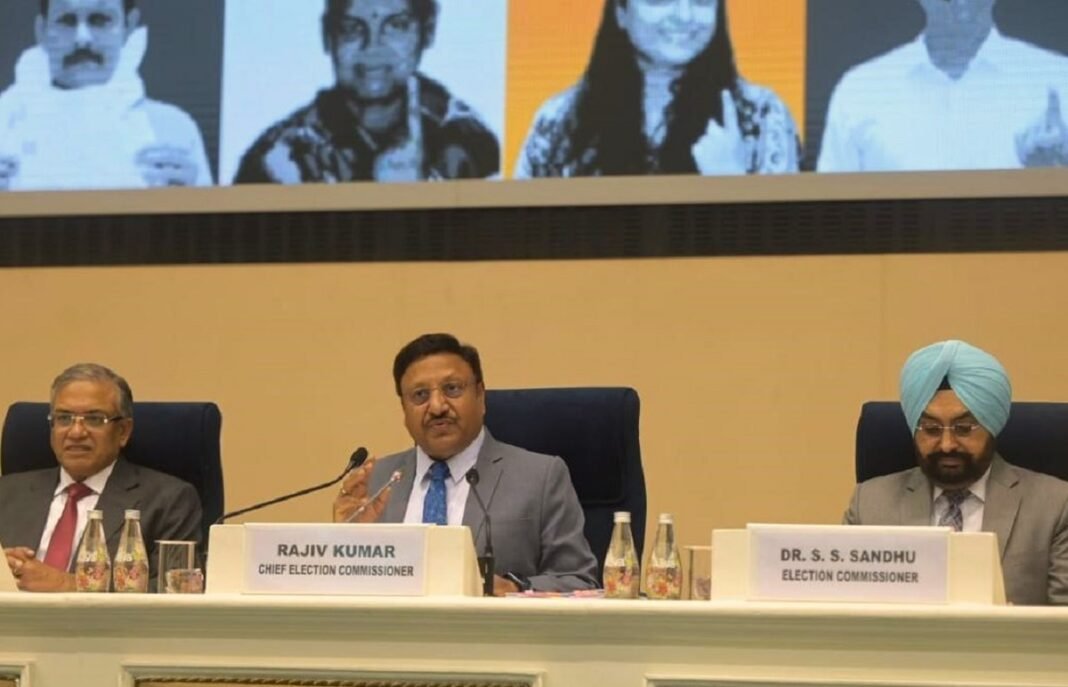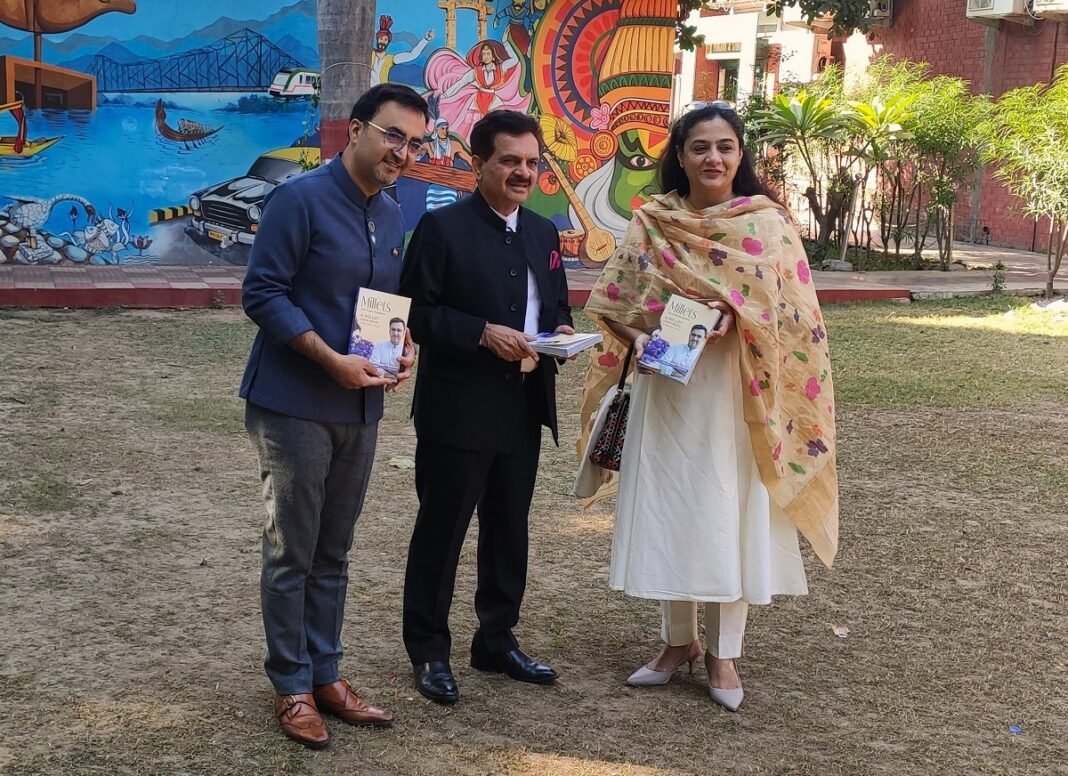AAP supremo Arvind Kejriwal striving to become CM for 4th time
Main challenger BJP looking to end its more than two-and-a-half decades of ‘sanyas’, banking on its increasing vote share election after election, and cashing in on its anti-corruption narrative
Once the dominant party in the National Capital Territory, having ruled it from 1998 to 2013, Congress trying to resurrect itself from scratch
More than two lakh first-time voters and another 25.89 lakh younger voters are among the total 1.55 crore voters eligible to cast their ballot in the elections to the Delhi state assembly to be held in a single phase on February 5. The votes will be counted on February 8, Chief Election Commissioner Rajiv Kumar announced today.
The electoral mix among the 1.55 crore voters is 83.49 lakh male voters and 71.74 lakh female voters.
The CEC sought to counter the allegations of the election process in the country being rigged, and while underscoring its integrity, asserted that not a single discrepancy has been found in votes counted through electronic voting machines (EVMs) and Voter Verifiable Paper Audit Trail (VVPAT) slips.
“Let me tell the nation today. After the Supreme Court mandated in 2019 that five VVPATs must be counted from each Assembly constituency, over 67,000 VVPATs have been checked.
“This translates to more than 4.5 crore (VVPAT) slips being verified. And let me assure you that not even the difference of one vote has been found with the new machines since 2019,” he said.
The term of the 70-member Assembly ends on February 23, and elections are to be concluded before that to constitute a new House.
Advertisement

AAP supremo Arvind Kejriwal is striving to become chief minister for a fourth consecutive time (his first term in 2013 had proved short-lived, as the minority government he was heading in a hung House, supported from outside by the Congress, fell).
The main challenger, the BJP is desperately trying to return to power after over two-and-a-half decades.
The Congress, once the dominant player in the national capital, but blown away by the AAP wave more than a decade ago, is trying to resurrect itself from scratch.
Congress, which was AAP’s ally for the 2024 Lok Sabha polls, is going alone in this election as the experiment failed and BJP made a hattrick of clean sweeps of all seven Lok Sabha seats in NCT of Delhi.
With Kejriwal himself and other top leaders of the party, which had rocketed to power largely on the anti-corruption, themselves mired in corruption cases in which they are out on bail, AAP may be facing its strongest challenge in this election, especially from the BJP, which election after election has been substantially increasing its vote share.
Congress too is seeking to resurrect itself in Delhi and seeking revenge on the same anti-corruption plank on which AAP had largely been instrumental in dethroning it from power in 2013.
However, AAP leaders appear to exude confidence that the populist/welfare policies pursued by its successive governments, and their narrative that the Centre, through the office of the Lieutenant Governor (L-G), is blocking many schemes, will help it fend off the BJP’s onslaught.
The outcome will largely be dependent on how much inroads the two rival parties can make into the vote share of the ruling party by continuing to hammer it, and its leader Kejriwal, on issues of corruption and non-performance.
Electoral history of Delhi Assembly since 1993
BJP has tasted power just once in the National Capital Territory, winning the first assembly elections in 1993, when Delhi’s Legislative Assembly was established (till then it was governed by a Metropolitan Council).
The Congress ruled Delhi for three consecutive terms from 1998 to 2013 with Sheila Dikshit leading the government in all three terms.
Born out of the Anna Hazare anti-corruption movement, then one-year-old AAP made a stunning debut in the Delhi assembly elections in 2013, emerging as the second largest party by winning 28 of the 70 seats, just four short of the largest single party, the BJP, and the incumbent party Congress being reduced to less than 10 seats.
Riding on the popularity of the movement, especially among the youth, AAP’s rookie leader Arvind Kejriwal had proved a giant killer, defeating three-time Congress chief minister Sheila Dikshit in her constituency of New Delhi by some 22,000 votes.
Due to a hung assembly, the BJP declined to form the government, and lucky Kejriwal was crowned Chief Minister in a minority government with outside support from the Congress, which was the principal loser of the AAP’s meteoric rise. His chief ministership, however, proved short-lived.
Two years later, when the government fell, and elections were called, AAP won a landslide victory, winning all but 3 of the 70 seats. The remaining 3 seats went to the BJP, and Congress drew a blank.
In 2000, AAP again swept the polls, surrendering just 5 more seats to the BJP, with the Congress maintaining its status quo.




